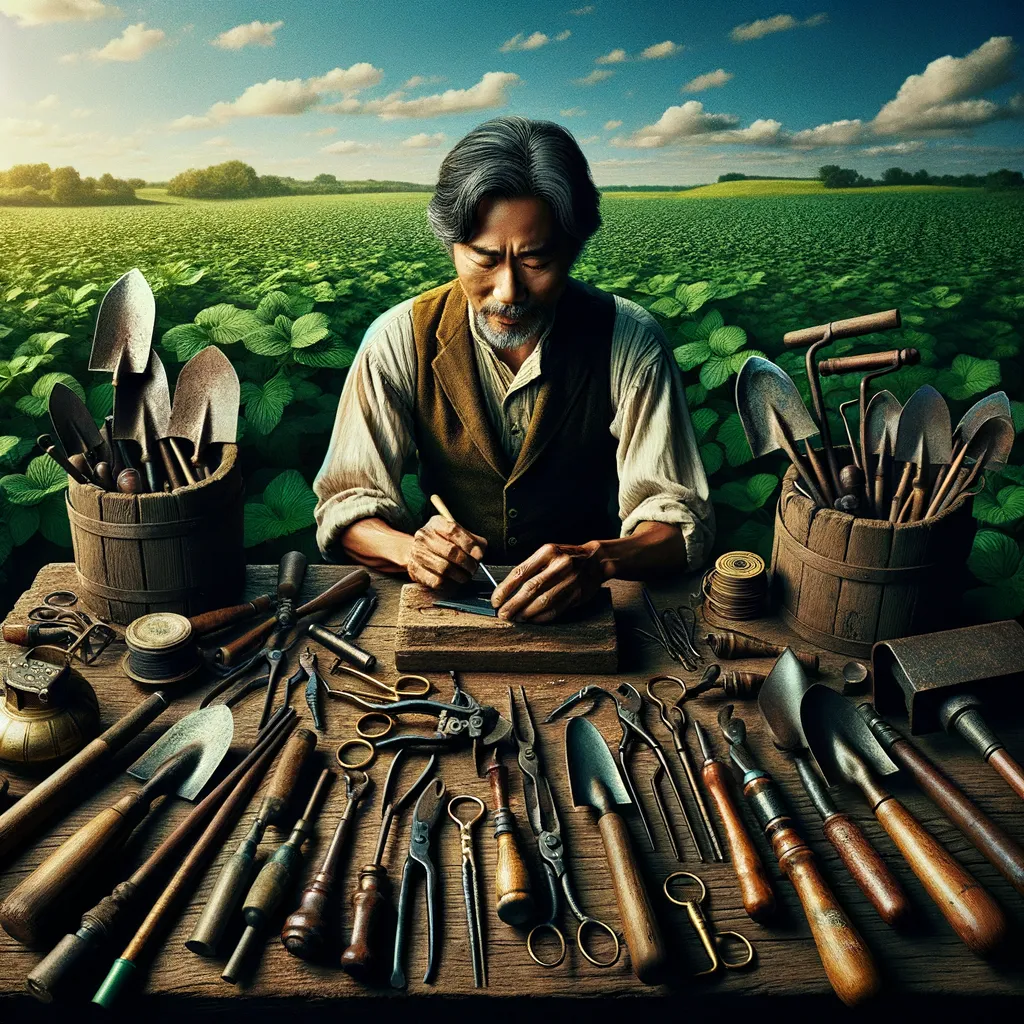Reviving Tradition: A Guide to Restoring and Utilizing Antique Tools for Modern Gardening
Welcome to our comprehensive guide where tradition meets modernity in the realm of gardening! If you’re a parent looking to infuse a rich sense of history into your modern gardening practices, you’ve come to the perfect place. This guide is crafted to help you explore the fascinating world of antique gardening tools, their restoration, and effective use in today’s gardens. With sustainability at its heart, this journey also offers a wonderful opportunity to share valuable skills and a love for the outdoors with your children. Let’s embark on this gardening adventure together, blending the old with the new to cultivate beauty and life in our backyards. For more outdoor inspiration, don’t forget to check out Outdoors and for places to connect with nature, explore Camp places.
Why Revive Antique Gardening Tools?
In an era where fast and disposable culture often overshadows history and craftsmanship, turning to antique gardening tools offers a breath of fresh air. Not only do these tools carry stories from the past, but they also embody durability and quality that’s hard to find in modern counterparts. Engaging in the restoration of antique tools is not just about preserving history; it’s also an exercise in sustainability and an opportunity to pass down a legacy and skillset to your children. By embracing these timeless implements, we can teach the next generation respect for the tools, the land, and the art of gardening itself.
Identifying Antique Tools Worth Restoring
The first step in this rewarding journey is to identify which antique tools are worth restoring. Flea markets, estate sales, and even family attics can be treasure troves of forgotten gardening implements, waiting to be brought back to life. Look for tools made from high-quality materials such as solid wood and forged metal, as these are more likely to withstand the test of time and restoration processes. Common tools you might encounter include spades, hoes, trowels, and rakes, each with its unique design and purpose in the garden.
Basic Steps to Restore Antique Gardening Tools
Restoring antique gardening tools to their former glory requires patience, a bit of elbow grease, and a love for preserving history. Here are some basic steps to get you started:
- Cleaning: Begin with a gentle cleaning to remove dirt and rust. Utilizing a mix of mild soap and water or specific rust removers can do wonders. For wooden handles, a simple wipe down may suffice to preserve their integrity.
- Assessment: Examine each tool closely for damage or wear. This step is crucial to determine if the tool is safe and functional for use, or purely decorative.
- Repair: Simple repairs such as tightening loose parts, refinishing wooden handles, or sharpening blades can often restore a tool’s usefulness. However, more complex restorations may require professional help.
- Preservation: Once restored, using the appropriate oils or protective coatings on metal and wood parts can help preserve these tools for future generations.
Restoring antique gardening tools is not just about the physical act of repair but also about reconnecting with the past, learning new skills, and teaching resilience and resourcefulness. As you delve into this rewarding project, remember that each tool tells a story, each blemish a memory, and with every stroke of repair, you’re not just fixing an object but preserving history itself.
Stay tuned for our next section where we will dive deeper into how to integrate these beautifully restored tools into your modern gardening practices, ensuring they not only serve as functional pieces of gardening equipment but also as educational tools for the entire family.
5 Essential Tips for Parents Restoring Antique Gardening Tools with Kids
Embarking on the journey of restoring antique gardening tools offers a unique blend of history, craftsmanship, and sustainability, making it a perfect family-oriented project. As parents inspire the next generation of gardeners, here are five essential tips to ensure a successful and rewarding experience when preparing for and executing the restoration of antique gardening tools for modern gardening uses.
1. Include Safety Measures in Every Step
Before diving into the restoration process, it’s critical to emphasize the importance of safety. Restoration work can involve sharp edges, rusty metal, and the use of chemicals for cleaning and preservation. Ensure children are equipped with the appropriate safety gear, including gloves, goggles, and aprons. Explain the safe handling of tools and materials, and always supervise closely to prevent accidents. Making safety a priority not only protects everyone involved but also turns the project into a learning experience about the importance of cautious and respectful tool handling.
2. Educate About the History and Value of Antique Tools
Restoring antique tools with children provides a golden opportunity to delve into history lessons outside the classroom. Take time to research the origins and uses of the tools you’re restoring. Share stories or interesting facts about gardening practices from the past. This educational aspect enriches the restoration project, connecting children with the heritage of gardening and fostering a deeper appreciation for each tool’s story and utility.
3. Choose the Right Project for Your Family
Consider the age and skill level of your children when selecting a tool restoration project. Some tools may require simple cleaning and sharpenment, ideal for younger participants, while others could need more advanced repair work better suited for older children or adults. Pick a project that everyone can contribute to in some way, ensuring the task is challenging yet achievable, to keep motivation high and provide a sense of accomplishment upon completion.
4. Embrace the Learning Curve Together
Restoring antique tools can present unforeseen challenges, from stubborn rust to unexpected repairs. Use these moments as teaching opportunities about problem-solving and perseverance. Encourage kids to think critically about how to overcome obstacles, whether that means researching different restoration techniques or seeking advice from experts. Emphasizing the learning process over perfection helps instill resilience and creativity, valuable traits in gardening and in life.
5. Plan for Fun and Functional Use
Once the tools are restored, the adventure continues as you integrate them into your modern gardening practices. Engage your children in planning how to use each tool effectively, whether in planting a new garden bed, maintaining existing plants, or perhaps even in a new landscaping project. This planning phase is an excellent way to teach about garden design, plant care, and the environmental benefits of using well-made, durable tools over disposable ones. Children will likely take greater interest in gardening activities when they can use tools they helped to restore, making the experience both fun and practical.By following these tips, parents can transform the restoration of antique gardening tools into an enriching family activity. Not only does it offer practical lessons in gardening, craftsmanship, and history, but it also fosters family bonding and instills a sense of environmental responsibility. Embrace this opportunity to create lasting memories with your children, teaching them valuable skills and the importance of preserving the past while nurturing the future.
Disclaimer
The articles available via our website provide general information only and we strongly urge readers to exercise caution and conduct their own thorough research and fact-checking. The information presented should not be taken as absolute truth, and, to the maximum extent permitted by law, we will not be held liable for any inaccuracies or errors in the content. It is essential for individuals to independently verify and validate the information before making any decisions or taking any actions based on the articles.





